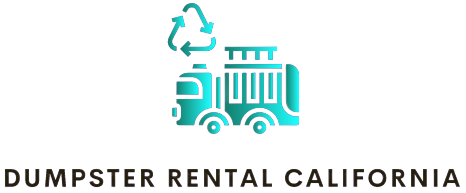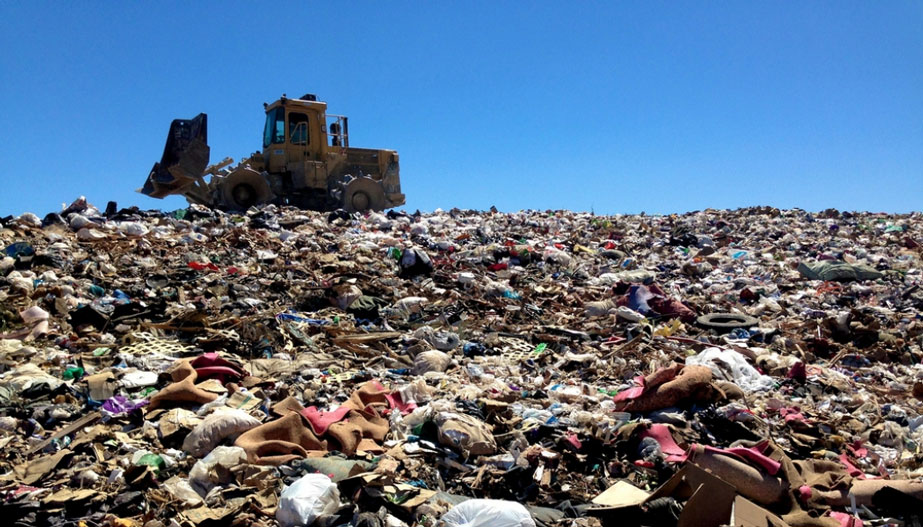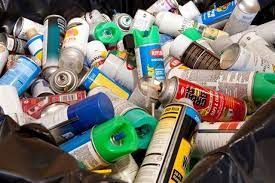Modern landfills are well-built and well-kept places where people can put trash. To make sure they follow federal rules, landfills are placed, planned, run, and watched in a strategic way. They are also meant to keep toxins in the waste stream from hurting the environment.
Landfills can’t be built in places that are bad for the environment, and environmental monitoring equipment must be used to figure out where to put them. These systems look for signs of polluted groundwater and landfill gas and take extra care if they find any. The Resource Conservation and Recovery Act (RCRA) has strict rules about how landfills must be built, run, and shut down (RCRA).
Landfills are one part of a system for managing waste that is all together. The EPA recommends that when building waste management systems, communities think about the waste management hierarchy, with a focus on source reduction to cut down on the amount and toxicity of trash and to make things last longer.
What Kinds Of Garbage Dumps Are There?
The RCRA Subtitles are solid waste and hazardous waste or the Toxic Substances Control Act (TSCA) are in charge of landfills (TSCA). The focus of solid waste is on state and local governments as the main entities in charge of planning, regulating, and putting into action the management of nonhazardous solid waste. This includes garbage from homes and nonhazardous industrial solid waste.
The following are examples of landfills that fall under solid waste:
- Municipal Solid Waste Landfills (MSWLFs) are made to handle trash from homes and other nonhazardous trash.
- Bioreactor landfills are a kind of MSWLF that quickly change and break down organic waste.
- Industrial garbage landfills are made to collect trash from businesses and institutions, which is often a big part of solid waste, especially in small cities and suburbs.
- Construction and Demolition (C&D) Debris Landfill: A type of industrial waste landfill built specifically for construction and demolition materials, like trash from building, renovating, and tearing down buildings, roads, and bridges. C&D materials are usually made of big, heavy things like concrete, wood, metal, glass, and reclaimed building parts.
- Landfills for Coal Combustion Residues (CCRs) are places where coal combustion residuals (CCRs or coal ash) are taken care of and thrown away (CCRs or coal ash). The EPA made rules about how CCR should be thrown away in landfills and put them in the Federal Register.
Hazardous Waste sets up a federal program to manage hazardous wastes from the time they are made until they are thrown away. The goal of the hazardous waste program is to make sure that hazardous waste is dealt with in a way that protects both people and the environment. Laws in hazardous waste control how hazardous wastes are made, moved, treated, stored, and thrown away.
The following are examples of landfills that fall under Hazardous Waste:
- Hazardous waste landfills are places where hazardous waste is thrown away. Landfills like these are not used to get rid of solid waste.
- Polychlorinated biphenyls (PCBs) should not be dumped. The Toxic Substances Control Act says what to do with PCBs. Some ways to clean up PCBs don’t need to be approved by the EPA, but others do.
Landfills In California:

Californians throw away about 6 pounds of trash every day. That’s about 2200 pounds per year, which is about the weight of a small car. The results for each person are much better than the state’s goal of 2.7 pounds per person per day (PPD) (PPD). The California Department of Resources Recycling and Recovery looks at individual disposal in terms of PPD because it includes both the recycling rate and total disposal (recycling and compost are not considered garbage) (recycling and compost are not counted as trash).
The goal is to make less trash, so increasing recycling rates won’t make less trash if people buy more things, which will increase both trash and recycled and composted materials.
Every big city in California hasn’t done enough to cut down on waste. Orange County has one of the best systems for getting rid of trash in the country. Families and businesses in 34 cities and unincorporated areas use this important public service. Our three active landfills are some of the biggest in the state. Each year, they take in about 4 million tons of trash. Please remember that we only take trash from people and businesses in Orange County. There may be a need to check the address.
The award-winning landfills in Orange County are great examples of environmental engineering and the idea of being a good neighbor. They make sure that the community is safe and healthy for both current and future generations by running efficiently, using renewable energy, and being environmentally friendly.
It’s time for California to make a change and focus on getting where it wants to go. For the state to do this, it will have to deal with the effects of recent changes in international trade. For many years, the US sent millions of tons of scrap metal to China so that it could be used for something else. China almost stopped taking American trash last year because it said it was too dirty and couldn’t be sold for recycling. The United States did not have a plan for this change in policy.
Without being able to send them to China, recyclables have been piling up at places all over California. The problem caused costs to go up, income to go down, and some recycling collectors to cut back on their services. For example, Sacramento stopped collecting mixed plastics in July because of the problem.


